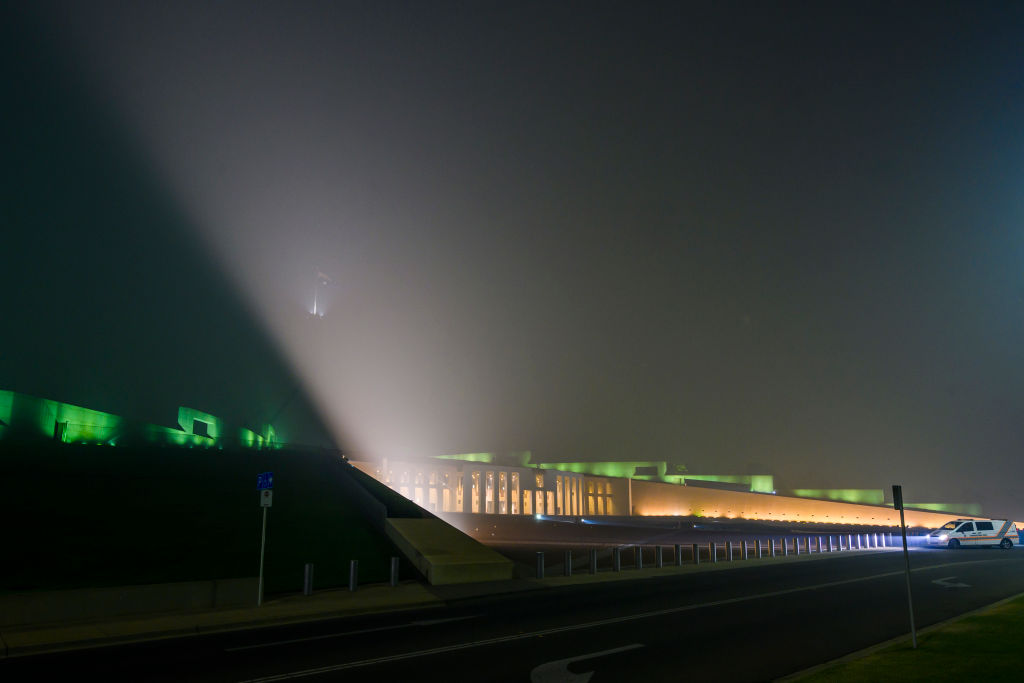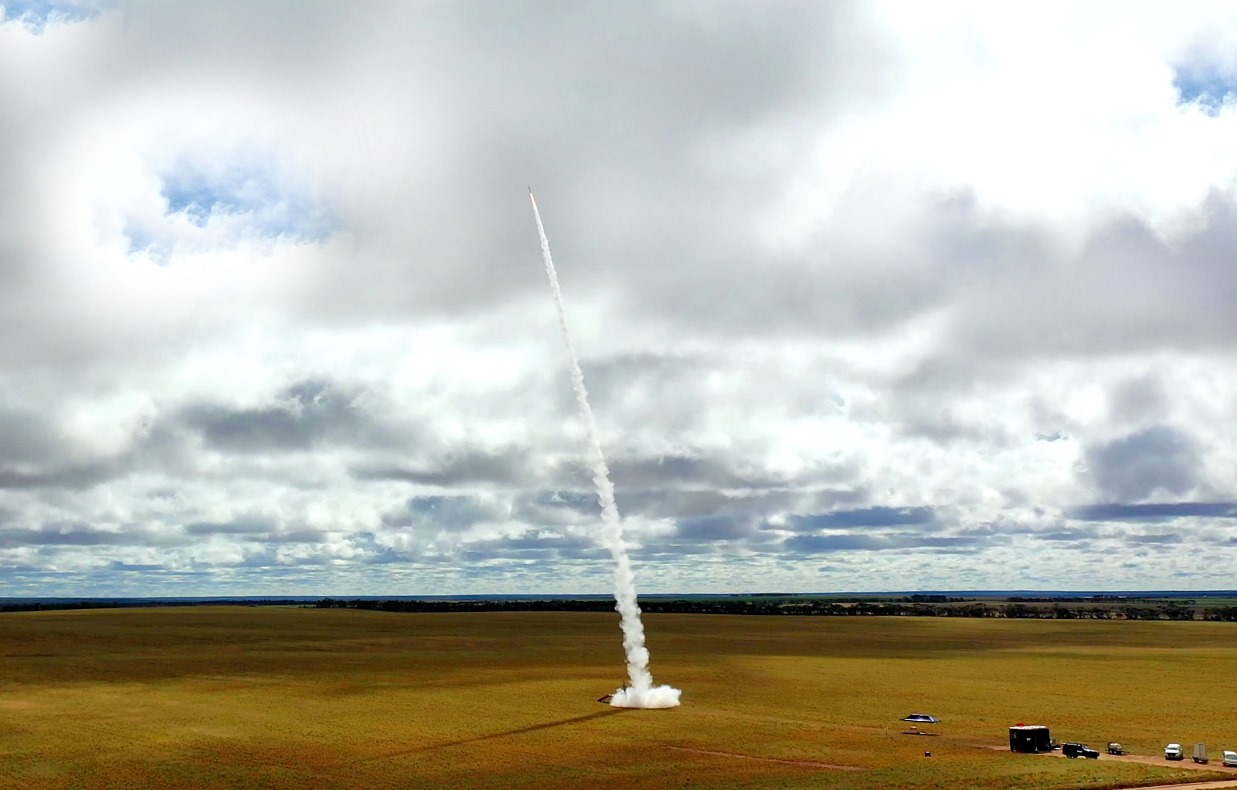
Most Australians would say that they are patriotic, proud to be Australian, and proud of their nation’s history, even for all of its shortcomings. True, self-denunciation of the nation and its history is in vogue among the cultural elite that is so well described by Musa al-Gharbi in We Have Never Been Woke: The Cultural Contradictions of a New Elite (2024). However, their long-term agenda of ending the nation’s ‘structural oppression’ and rewriting its colonial-settler history, in the name of ‘social justice’, will never take hold in the community at large.
If the suggested remedy for the historical harms of colonisation—the retelling of the nation’s history, and the pursuit of reparations for those harms—were to be pursued seriously, such action would be rejected by most Australians as being too radical, and an unnecessary distraction from meaningfully addressing the real disadvantage that is experienced by Aboriginal and Torres Strait Islander Australians.
Rather than engaging in such national self-denunciation, most Australians practise what might be termed ‘soft patriotism’, an intuitive love of country that is ingrained from early childhood, for those born here, or rapidly acquired by those who choose to make Australia their home, first as permanent migrants, and then as new citizens.
Patriotism involves more than going to the beach on a summer’s day on 26 January to celebrate Australia’s national day. It is a love of country. It is an understanding that Australia is not an arbitrary geographical space that happens to be inhabited by randomly selected individuals who lack a connection to one another. It is a cherishing of the nation’s shared heritage, which is the legacy of settlers, pastoralists, farmers, miners, administrators, industrialists, workers, and so many more.
Our institutions of democratic government were shaped by colonial-era founders, who championed the creation of the Commonwealth of Australia in the second half of the 19th century. Our economy was also built on foundations laid in colonial Australia, when endowments such as wool and gold, and access to capital and product markets, led to Australia being one of the richest countries in the world on a per capita basis at Federation in 1901. These and other foundations of the nation will need to be better taught to future generations in an era when historical understanding is in decline.
The patriot also intuitively recognises that being a member of a national political community is the best available means of exercising freedom, democracy, and sovereignty. Maurizio Viroli wrote in For Love of Country: An Essay on Patriotism and Nationalism that patriotism involves a love of the institutions and the way of life that sustains the common liberty of a national people. In a world of sovereign nation-states, we owe no higher loyalty to a global or supranational form of government, to another nation-state, or to any international organisation.
When the Nationality and Citizenship Act 1948 became law on 26 January 1949, it established for the first time the legal status of ‘Australian citizen’. At the first citizenship ceremony, held in Canberra on 3 February 1949, the Minister for Immigration, Arthur Calwell, asked the new citizens to respect the Australian flag, and to swear allegiance to ‘our concepts of government’. He explained that Australian democracy was a means for achieving national progress without the ‘chaotic spectacle of revolutionary disturbances ending in dictatorial minority rule’. He said that faith could be placed in the ‘common-sense and national goodwill of the Australian people’, and that political differences could be resolved peaceably through the nation’s democratic processes. That sentiment is today captured in the Australian citizenship pledge, when new citizens are asked to pledge their loyalty to Australia and its people, to share our belief in democracy, to respect our common rights and liberties, and to uphold and obey Australian laws.
Most Australians embrace this form of patriotism. To call it ‘soft’ is not to diminish it. Rather, it is to suggest that such patriotism is reflexive and relatively cost-free. It is a love of a readily understood ‘idea of Australia’, which does not require much explanation or ideological rationalisation.
There is an altogether different, and more challenging, form of patriotism. ‘Hard patriotism’ has a necessarily martial quality, as it is invariably associated with the defence of the nation. It is today being displayed by Ukrainians, and by Israelis. Hard patriotism challenges us to ask of ourselves: what is to be defended, to the last if necessary, and are we prepared to pay that price?
Hard patriotism cannot be solely expected of our armed forces, although it is intrinsic to the profession of arms, which traditionally have placed a more visible emphasis on duty, honour, service and country. In the event of having to defend the nation, hard patriotism would be required of all. Sacrifice and commitment would be expected from all, subject only to age or incapacity. Hard patriots would need to be found not just in the armed forces, but across a mobilised and resolute population.
Winston Churchill’s ‘darkest hour’ speeches of 1940 are a supreme example of hard patriotism, expressed in magnificently eloquent words. His theme was ‘never surrender’, because he knew that surrender would mean the loss of liberty and sovereignty, and the end of the British way of life. The British people rose to the occasion, as did the Empire, which for a time stood alone against Nazi Germany. Compare this with France. French historian Marc Bloch described in The Strange Defeat—written in 1940 and published posthumously in 1946—how the French were still a patriotic people in 1940. However, after a period of national malaise in the 1930s, which had led to a loss of self-confidence, they were not prepared—strategically or morally—for the Nazi onslaught. Soft, demoralised France fell in 1940, while hard, patriotic Britain fought on. Later, Charles de Gaulle emerged as the hard Free French patriot who restored French honour.

Hard patriotism is the willingness to fight to the end if necessary for three treasured national possessions: freedom, or the liberty to live as we choose, subject only to our own laws; democracy, or our institutions of government that allow us to choose our leaders and lawmakers, and to check abuses of power; and sovereignty, or our capacity to control our territory and resources, and to pursue economic and social development as we see fit, free from external coercion and intimidation.
Australia has no threatening neighbours, or historical enemies. If we did, hard patriotism would be intuitive and reflexive. Instead, for more than two centuries, we have mentally lived in an imagined ‘sheltered land’, far from strife. No matter that the security of our ‘sheltered land’ has been a function of Australia being prepared to fight distant wars (and a close one in 1942-44) against Eurasian powers, thereby assisting first the British Empire, and then the United States, to prevail over aspiring Eurasian hegemons.
Today, we still live in a ‘sheltered land’, at least in our national imagination. In the absence of enemies at the gate, it is hard to appreciate that our way of life might one day be threatened—if not necessarily by invasion, then by other forms of strategic coercion or military attack. Australian strategic and defence policy is not couched in the language of hard patriotism. Even though we appear to be pursuing an implied grand strategy of working with the US and others to prevent Chinese hegemony, it is a strategy that dares not speak its name in those terms—principally so as to not disturb the foreign policy of ‘speaking softly’ and stabilising ties with China, but also to avoid the challenge that would be inherent in building hard patriotism.
Therein lies the problem. Hard patriotism cannot be conjured into being suddenly on the eve of a military crisis, or at the outbreak of a war. Moreso than a significant financial crisis, a serious public health emergency, or a catastrophic natural event, a major war would throw its terrible shadow across society in ways that would require a more far-reaching mobilisation of the nation, and greater sacrifices.
A determined and resolute government could today make the case for hard patriotism, so that we were better prepared for the unlikely but credible prospect of major war. This would require a different discussion between the government and the people. Such a discussion would begin with a more honest explanation of the precarious nature of our strategic circumstances. The ‘sheltered land’ of our national imagination is no more. The Eurasian axis of China, Russia, Iran, and North Korea is seriously challenging the US and its allies in the struggle for mastery in Eurasia, and therefore globally. Distance no longer affords us the protection that it once did, as potential adversaries field longer-range weapons, and potent offensive cyber capabilities.
In a more honest discussion, we have to consider the possibility of the emergence of a world where an isolated US, following either military defeat or strategic withdrawal, was either unwilling or unable to extend its protective shield over Australia and other allies. In that world, US forces and facilities would not be present in Australia, and its nuclear forces would not protect us. China would rule the waves of the Pacific and Indian Oceans, and its military bases would be in our sea-air approaches, including probably in East Timor, Papua New Guinea, and Solomon Islands.
A hegemonic China would be free to impose its will on Australia, including in relation to trade, investment, resources, energy, and more besides. There would be little that we could do about resisting Chinese pressure, other than to develop significantly larger armed forces and military capabilities in an effort to independently deter a military attack. This would probably have to include an independent nuclear deterrent.
Australia would come under pressure to free up its markets for Chinese investment and acquisition, to drop restrictions on technology access—for instance, regarding 7G and successor technologies—and agree to more China-favourable terms for access to our resources and energy. We would also come under pressure to extradite persons of interest to China, and to ensure that Australian media and public discourse exhibited the ‘correct understanding’ of China and its interests. Local quisling political and business leaders would emerge, who would urge their fellow Australians to ‘adjust’ to the new reality of Chinese supremacy.
To avoid the possibility of such a future, Australia should be doing more to support the US-led deterrence of China, including being prepared to go to war if required to thwart Chinese hegemony. This would require the building of a hard Australian patriotism, the kind that is seen in frontline states that have a threatening neighbour.
In any such war, China would employ advanced methods and techniques to undermine the national will to fight, sow discord among the people, fracture the community, amplify quisling voices, and generally attempt to demoralise the population. Cognitive warfare would be employed, waged over TikTok and the like, using technology-enabled propaganda and disinformation. An early objective would be to have sections of the community question the legitimacy of any such war, or at least Australia’s participation in it. Attempts might even be made to undermine Australia’s very legitimacy, perhaps by emphasising its origin as a European settler-colonial society, an ‘outsider’ in greater Asia, with a shameful, racist past.

China’s President Xi Jinping has made Chinese nationalism a co-equal component, with Marxism, in his overarching ideological framework, as explained by Kevin Rudd in On Xi Jinping: How Xi’s Marxist Nationalism is Shaping China and the World. Chinese strategy mobilises national history and national identity, in competition and in conflict. Nationalism is employed to sustain a dual narrative of China’s re-emerging to its rightful place of international prestige and leadership, and its cultural superiority, relative to the declining West. China would go into any conflict confident and self-assured, not agonising over a supposedly shameful past. National self-confidence would be crucial to success. Like France in 1940, any soft and demoralised nations would lack the will to fight such a war, calculating that yielding to the ascendent power was the more tolerable course.
Political leaders in democracies are invariably focused on the domestic priorities of their citizens. They are measured on their ability to deliver prosperity, and not their ability to wage war, unlike earlier times when waging war was central to the prestige of the state. Issues of statecraft typically hold no interest for parochial citizens. In such an environment, building hard patriotism in the absence of a visible threat is almost impossible. However, leaving it to the coming of darker days would be too late.
True, Australians are likely to unite in a crisis, as was seen in the COVID pandemic and during natural disasters such as the Black Summer of 2019-20. They tend to be trusting of the institutions of government during such crises, even if there is grumbling at inconvenience. However, in those circumstances, governments tend to have more direct levers and a greater power of initiative, such as introducing urgent fiscal stimulus measures, or enforcing strict public health measures. A war fought in defence of the nation would be a more challenging affair. It would require broader and deeper mobilisation, and more directive control being exercised by the federal government, as compared, for instance, with what occurred during the COVID pandemic.
How might a balance be struck between trying to rally a sceptical people too soon, when many are unlikely to see the need, as against trying to build the hard patriotism that would be required in wartime, when it might be too late? One way might be to ask all citizens, perhaps aged 18-65, to affirm annually a ‘pledge of service’, where we would all be asked to register the kind of national service that we would be willing to render in the event of a military emergency involving the defence of the nation. This would not be limited to being willing to take up arms. It would include other categories of service such as medical, construction, logistics, and so on. Establishing such a register, perhaps as a prelude to establishing an Australian national service scheme—solely for the territorial defence of the nation—would form the basis for a very different discussion between the government and the people about the realities of our strategic circumstances.
Pursuing this and other initiatives, such as preparing a War Book, and treating national security like the national budget—through an annual, prime-time, national security statement to the nation—would better prepare the people for what are said to be the worst strategic circumstances since the Second World War. A harder patriotism would build steadily, as the people began to appreciate the stakes, and the potential sacrifices that might have to be made in order to protect all that we cherish about Australia. Unfortunately, Australia is no longer a ‘sheltered land’, and the times call for a new Australian patriotism.












